Fintech Startup BanQu is using cutting-edge blockchain technology to create a portable economic identity for the world’s poorest people. Here’s how.
Worldwide, about 2 billion adults have no bank account. Nearly 800 million people live on less than $2 a day. And the population of refugees and displaced people has soared to more than 65 million globally. What do these groups have in common? They all lack formal economic identities.
- Economic identity
- The digital or electronic credentials defining a person and his or her history of financial interactions in the world economy.
That means they’re shut out of the types of financial and governmental services many of us take for granted, like access to credit and loans, and often lack credentials about previous accomplishments, including birth records, educational achievements, and property ownership.
Minneapolis-based tech startup BanQu’s mission is to change all that and solve persistent poverty by providing a portable, democratic economic identity to the world’s poorest people. To do so, the company has built a patent-pending app platform and network based on cutting-edge computing technology called blockchain. In 2016, the company was piloting its app in multiple countries, and expects 2 million users by the end of 2017. We spoke with BanQu founder and CEO Ashish Gadnis about what BanQu does, how it works, and the long road ahead toward ending global poverty.
BANQU AT A GLANCE
Locations: Minneapolis, MN; Austin, TX; Miami, FL; and Hargeisa, Somaliland
Founded: 2016
Employees: 15
Impact: On track to register 2 million users by the end of 2017
Awards and recognition:
- Cashless World 2016 Innovation Award
- MIT Enterprise Forum Innovate for Refugees grant 2016
- FinovateSpring 2016 Best of Show
INTERVIEW
What’s the background behind how you started this company?
Ashish Gadnis: I grew up in poverty in India and was very lucky to get out because of education. Guys like me are the outcome of a vision that India’s first prime minister had, which was, “Hey, we may not be able to give everybody food, water, and a toilet, but we’ll find a way to give these kids education.” I was part of that. I learned how to code at an early age, got hired by Tata Group [one of India’s largest multinational companies], traveled all over the world, moved to the U.S., and the rest is history.
[recommended:2924]
I built and sold three tech startups, and in 2012, I sold my last startup and started working as a volunteer in East Africa, helping build supply chains for extreme poverty populations with a focus on women. In the Congo, as I was building social enterprises as a volunteer, I uncovered a significant gap that seemed to exist in all INGOs [international non-governmental organizations] as well as social enterprises. The gap was, in my opinion, the fundamental root cause of extreme poverty in the world: While our customers — we never looked at them as beneficiaries — were making money and doing better as the social enterprises were doing well, the local financial institutions wouldn’t recognize them because they could not triangulate what was happening.
The female farmers I was working with in the Congo had a lot of things that people were “giving them.” Education, mobile phones, microfinance, and so on. Or when people come to refugee camps, they get a lot of different aid packets from different agencies. They have a loan from the Refugee Council, they’re in some sort of a program with the UN, somebody is giving them an immunization. The problem is, all of these events are “things that happen to you.” They don’t become a part of who you are.
In the U.S., you can walk in with a utility bill, a driver’s license, or a pay stub and a financier will easily give you a loan or you can buy a car. In places like the Congo or Myanmar or Somalia, or for refugees on the move, none of that becomes part of your identity. People continue to stay poor because they’re not connected to a local, national, global supply chain.
We looked at the problem and said, “What is out there that allows the consumer, which is that mother in the Congo or refugee in Somalia, to own her transaction data?” That’s where I decided that the blockchain was a great way to solve the problem. In some ways, it’s a very simple problem, yet there wasn’t the technology to get around it until the blockchain came along.
You can actually create an identity on the blockchain, and that identity is less about, “Hey, this is my name and address” — it’s more about who you are in terms of your education records, microfinance loans, any transaction history. In the refugee and people-in-extreme-poverty zones, if you have that base identity, then you become monetizable or bankable. If you start creating these economic identities, then you can start creating stable homes, so they’re not going from loan to loan or aid to aid, and you can start fostering education.
That’s the basic construct of BanQu. I’m an evangelist because I grew up poor myself, and I hated standing in the ration line three hours every other day, without even any record of that time or transaction.
Can you talk about blockchain and how that’s game changing?
AG: Blockchain is the technology that Bitcoin was built on, but people have realized that while Bitcoin continues to be unstable, the blockchain is extremely stable. Blockchain is really a distributed ledger.
[recommended:7288]
In traditional systems, there are closed databases. We’re used to our banks holding all our information. If you try to pull your house records and credit profile and utility bills together, you have to ask a bunch of different institutions. Your house has a title that is held by a title company, and then all the paperwork and bureaucracy and brokers are in the middle. The blockchain decentralizes that information. It breaks that notion of a database or a system. If you have a title for your house, instead of that title sitting in five different databases, it sits on the blockchain and then the world subscribes to that title.
The best way to look at blockchain is that if I owed you something, say, 5,000 years ago — let’s just say I owed you a couple of cows — the entire village would know about it; it’s a public database. People can see it. Because of that public knowledge, I couldn’t cheat you.
Today, if I gave you a check, it takes four to six days to clear, because there are a massive number of databases. Citibank has 800 databases. Barclays has 800 databases. All of these people are touching that check over a five- to six-day period before it clears. Whereas in the blockchain, that settlement of me giving you a check happens in less than five seconds because the check is now on the blockchain, and I don’t have to rely on six layers of brokers.
A title company is one of the great examples. If you were to buy a house, look at the amount of paperwork you waste in just getting the title. Imagine a world where your house had its title on the blockchain, the entire village — going back to that example — agreed that that was the title, agreed to the validity of the house, all you’d have to do is transfer ownership from you to me and you cut through all of this paperwork and bureaucracy.
Blockchain will change the world in the next ten years. The massive transformational shift is you basically bring a level of transparency and accuracy that cuts through all the middle layers. If you think about what happened in the internet from 1994 to 2014, that level of change will happen in half the time because of the blockchain. Every industry — print, financial, health care, real estate — will be touched poverty and for refugees to gain back their status in society and grow.”
One thing that’s important: everybody talks about financial inclusion for the poor. I think that’s a misnomer. Financial inclusion [as it’s practiced today] really means, “You’re poor. I will give you some money but you will stay poor.” If you’ve ever been to Africa or East Asia, the average microloan is at 30 percent. You’re lending out $100 at 30 percent, yet in the US you can raise $2 million at 4 percent.
The reason why somebody is lending $100 at 30 percent is because nobody knows who these people are because nobody wants to take the time to bring them into a trust network.
If she has a piece of land and has been harvesting crops for thirty years, common sense demands that that mother is very bankable, that mother is very creditworthy.
In partnership with UN Women, we took a very simple approach and said, “What if we created an economic identity for that farmer where you could collect five or six key data points that build her identity?” We’re not talking about name, address. I’m talking about transaction stuff.
Number one, we register the farmer on our platform. That farmer has a piece of land; we digitize the land by taking a GPS picture of it. The minute you take a GPS picture of that land, it generates a forecast. If I have one acre of land [in this region], I should by blockchain. Anybody who uses a database will change. About $2 billion of new startup dollars went into financial tech or insurance tech companies last year, startups that are all basically using blockchain to make more money. The banking industry will save $15 billion annually just because of reducing the time of settlement because of the blockchain.
It sounds like there are really two big leaps happening here at once. You’ve got this new way of exchanging data via the blockchain that’s very powerful. Then second, your company is the first to take that new way of exchanging data and bring that in service of all these unbanked people.
AG: Exactly. Everybody in the world is desperately trying to make more money from blockchain. We were the first ones who said, “We don’t want to touch the money side. We believe that the blockchain offers a true path for people who live in extreme the time to bring them into a trust network.
We believe that if you have an economic identity, you have every right for that identity to be portable. So, Rachel has a birth certificate. Rachel has a cell phone and a piece of land. Those should be monetizable so she can now go and get credit, she can get banking facilities.
One of the early successes we’re seeing is with very, very poor farmers in Rwanda. If you’re a poor female farmer in the middle of nowhere, on the Tanzania-Rwanda border, you basically are feeding a family of eight or ten on $300 a year, so we’re talking about even less than $2 a day. Any harvest she can raise, typically it’s maize and beans, the broker says to her, “I will buy your corn at this price, otherwise it’s going to go bad.” The mother is forced to sell the corn because she has no access to information. She has no identity. But if she has a piece of land and has been harvesting crops for thirty years, common sense demands that that be able to produce 100 kilos of corn. Then the UN has orchestrated buyer contracts for that 100 kilos of corn.
Now this mother/farmer has three things which she never had before. One, on her text-message phone, through the blockchain and our application, she gets to know, “I own one acre of land and it’s going to generate 100 kilos. I have a buyer for those 100 kilos, even though I’m four months away from harvesting.”
Next step: If you dry the corn to 13 percent moisture content, the price of corn doubles [because it keeps longer]. With our technology, the mother has an identity: “I own a piece of land. I have a forecast. That forecast has a buyer.” And that buyer is now going to allow her to get collateral to get a dryer so she can dry her corn. All that becomes part of her history.
Third, that mother, who now has these transactions that are part of her identity — the blockchain allows her then to take that identity and, depending on her phone, she can go to [the local version of] Walmart and say, “You can see I have a piece of land. I have a microloan. I have a harvest. I have a dryer and I’m selling it at market price.” And now she can buy things. If that Rwandan woman farmer has her identity in the blockchain and she has gone through three farming cycles, you would not charge her 30 percent on $100, you would charge her 4 percent on $100 because she has history.
You’ve gotten rid of all this NGO bullshit and all this middleman and bureaucracy. You’re giving people an economic identity where they have a standing in the world, whereas in the traditional systems all this information would be on a spreadsheet, it would be sitting on a computer somewhere, at the UN, at the Grameen Bank, and the mother is left out.
How does that farmer access these records? Is it via her cell phone?
AG: One of the things I learned over the last four years spending time in Africa and refugee camps: If you’re in Somalia or if you’re in the Congo, you get cell phone service. The way we built our app, we kept it extremely lightweight because we knew not everybody is going to have a smartphone.
The way we register people, like when we did initial pilots with the Somali community, we drive it at the consumer level. We go in and we create a trust network. For example, if we sign up a young man in Minneapolis, within the day, five or ten of his family members in Mogadishu, in Jubaland, in Somaliland will sign up because they are part of a trust network. I create my identity here in the US and then the app pings my mom via text message. If my mom has access to a smartphone, then it’s very simple. She can take a picture, create her identity, and now I accept her because I can see her.
If she doesn’t have a smart-phone, she can go to an M-Pesa [mobile phone-based payments] kiosk or a UN camp and they help her create an account. The key is that once you’re in the trust relationship, it’s more than remittance. When my mom goes and gets her $100 I sent her, that $100 becomes part of her history. If I enroll her, for example, in a World Food Programme, where they’re going to give her a food packet, that becomes part of her transaction history. If she loses her phone or something happens, there’s a war and she has to move to Ethiopia or Kenya, all she has to do is either enter a thumbprint, if they have a thumbprint scanner, or do a passphrase, and all that information is available to her on the blockchain.
This portability is so important. If you look at the refugee situation today in Dadaab, on the Somalia-Kenya border, where I was about a month ago, that is one of the largest refugee camps in the world. About 600,000 people have been there, some for 25 years. We met with a lot of people, and particularly shop-owners who are now third-generation refugee families: their parents came, these kids were born there, now they’re in their mid-20s, they have kids. Family after family said, “We want to go back to Somalia,” because they’re stateless and the Kenyan government is starting to shut down the camp. But they cannot go back to Somalia because they will not be recognized. Even by the UN. The UN doesn’t recognize you and you have to start all over again.
[recommended:7550]
We are in the initial stages of rollout within the camps. If you can start collecting “the data” that happens to you as a part of your blockchain identity, if I now go from one camp to another or if I’m on the move from Syria to Jordan to Greece to Turkey, every time I get to an agency, if the agency is willing to recognize that identity — and that’s where we’re in a little bit of an uphill battle, but we’re fighting it — they will be able to see, “Oh, this is Ashish.
He had a family in Syria. He owned a shop. Here is his education record. This is the kind of aid package he got in the camp,” and so on. And that makes them not just a number anymore. That’s one of the most fundamental things we are changing when it comes to refugees. There’s a lot of conversation in the UN and the NGO community around identity, but nobody actually has done anything, other than us, who have an actual product.
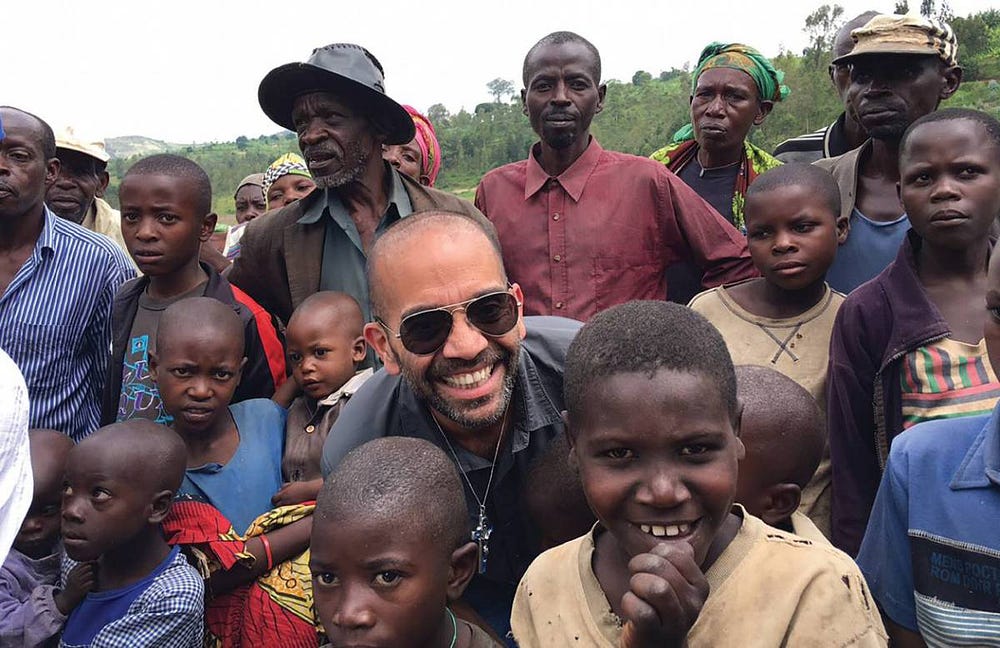
Tell me about the big problems you still need to solve for this to work as you envision it.
AG: We’re in for the long haul. This is a 15-, 20-, 30-year journey. The near-term problems are getting people to recognize that it’s a person in extreme poverty’s or a refugee’s right to have an identity. I think a lot of times, NGOs look at these people as beneficiaries. In my personal opinion, you’re taking away somebody’s dignity [by thinking that way].
The other obstacle is a lot of these large NGOs tend to be very much driven by getting more donor funding. “I’m going to get more donor money if there are more refugees.” It’s a very sad way of looking at the world. We’re trying to change the conversation and say, “You want to look at the refugees and people living in extreme poverty as communities you’re investing into; peer-to-peer.”
The other barriers are the political situations. The Kenyan government right now is in turmoil. The Somalis have a failed state. The Jordanians have an issue with the Syrians. It’s constant conversations, meetings, a lot of travel.
Nothing is impossible. We’ve made a ton of progress in the last year. Over the next couple of years, our goal is to have about two million identities on the platform.
What is your eventual business model? Are you guys going to be a nonprofit the whole way or are you hoping to be a social enterprise?
AG: We’re very clear with our business model that we’re a for-profit social enterprise, because that’s the way we’re going to scale the business. We’ve never been a nonprofit. I built and sold three startups. I’m not a big fan of nonprofit for the sake of nonprofit, because I’ve seen the dark side.
We have three lines of business. One is for the banks and financial institutions that are desperately trying to bank the unbanked. For example, we are having conversations in places like Colombia, where there are a couple million people who were displaced because of the FARC rebels; you can’t integrate somebody into society if you’re not willing to include them in the banking realm. There’s a bank that wants to leverage our platform. That business model is very straightforward. We charge an annual license fee.
The second model is tied to the INGOs and social enterprises that are trying to provide better services to the refugees and people in poverty. If you go to a camp it’ll shock you that there are at least 15 to 20 INGOs, and none of them talk to each other and every refugee’s information is duplicated over a bunch of spreadsheets. In that case, again, it’s a standard annual licensing fee.
The third line of business is governments that we are right now in conversations and have done some pilot testing with. Governments are looking to establish an identity that allows them to do more for their citizens. Obviously, the major reaction we get is, “Are we going to have a Big Brother scenario?” That’s where the blockchain becomes relevant. The blockchain is not a centralized database. It’s distributed on a network so that you own your data, not the government.
Do you ever imagine a time where a government could decide to use this for voting or some other forms of citizen engagement?
AG: We stay out of the political arena. But think about it: If your utility bill was on the blockchain, and I can now have a thumbprint, I wouldn’t need another form of identity for voter registration. The applications are huge. I tell people I’d love to see more competition, because right now we’re the only ones who are working on this [social enterprise] side of the block-chain world.
We’re very focused on the 65 million refugees in the world, and the 2 billion people under $2 a day; we have a lot of work to do. We’ve had a couple of offers to get bought out by big banks who want to leverage our platform because we already have a product. But I don’t want to sell to a bank because then I would break my own promise [to solve this problem].
What have you done about funding?
AG: We’re blessed. I resurrected my old teams. We invested our own money. And then we just recently closed a pretty significant seed round, because we want to expand the number of countries in which we can start deploying. Somewhere late in 2017 we’ll open a Series A to really scale it up big time.
How do you make sure that you’re screening investors to be really clear that they’re mission-aligned and are not going to pressure you to sell to a big bank?
AG: The simple answer is I’m old. That helps. Pretty much everybody who we work with, we know, and everybody has the same moral compass. In fact, for our Series A, our shortlist is focused on impact investors I have known 10 years.
To be honest, everybody who has a dime wants to invest in blockchain to make more money. There is literally nobody on this [for-benefit] side of the ledger. We find ourselves in a sweet spot where people are like, “Hey, finally somebody is looking at the blockchain for good and yet they’re a for-profit enterprise.” It’s not like we’re abandoning a healthy balance sheet. We’re saying, “Hey, look, we don’t need another blockchain company trying to make more money on Wall Street.”
What’s next?
AG: One of the things we’re trying to do is to start up a conversation with the refugee centers here in the US. When the refugees come into the US, they get a packet. If you’ve ever been to the Detroit airport or Atlanta airport, it’ll break your heart. They get a white plastic bag with a sticker that has a number on it. That’s it. There’s nothing recorded beyond that packet. All this history that they had, their education history back home, it’s just lost or it sits on a piece of paper. What we’re trying to say is that that family in Rwanda, if there was a civil war and if their data was part of the blockchain identity, then now they are universally acceptable as not just refugees but people who are working hard, making a living, with kids going to school.
The key is to really understand the value of the trusted network. The traditional systems are based on mistrust. That’s why banks have their own title company and your mortgage company has its own title company. Blockchain demonstrates a more democratic way of dealing with trust issues. That becomes extremely valuable for somebody who lives in poverty.
What’s giving you hope?
AG: Good question. I think what gives me hope is that there is a fair amount of movement right now towards people recognizing that we’re getting to a tipping point in terms of refugees and extreme poverty and violence and crazy rhetoric on the political side. You will completely feel hopeless if you’re standing in the refugee camp, I’ll tell you that. Because time stops. If you’re a refugee in a camp for 25 years, time actually stops for you. It’s a balance.
GADNIS’ TOP 3 PIECES OF ADVICE FOR MISSION-DRIVEN ENTREPRENEURS
1 // Be very clear about what you’re trying to solve.
Don’t be enamored of the technology. For example, if the whole blockchain thing collapsed, it wouldn’t change my perspective on how we can solve poverty. I would just find another way. You can’t start with the technology and then add a passion to it. You’ve got to have the passion, period.
2 // Don’t put all your bets on one client or partner.
Especially working with governments and NGOs, you need to take a bit of a shotgun approach because the bureaucracy is so deep in some of these organizations. In many cases, what we’re trying to do would disintermediate a lot of these NGOs. My advice would be to play five or six sets. Just make sure you don’t fall into the trap of, “We picked up [a big client],” and two years go by and you do nothing else.
3 // Be on the ground.
You cannot be a mission-driven entrepreneur [trying to solve global poverty] and sit in the U.S. You have to be on the ground. I walked for four days in a refugee camp, sat with the families, went into the container camp. A lot of times I’ve seen social entrepreneurs do the helicopter run. They’ll fly in, stay at a fancy hotel, make a drive and then they’re back after a photo op. It doesn’t work that way.
A version of this article originally appeared on B the Change. BanQu is part of the community of Certified B Corporations. Read more stories of people using business as a force for good in B the Change, or sign up to receive the B the Change Weekly newsletter for more stories like the one above, delivered straight to your inbox.

